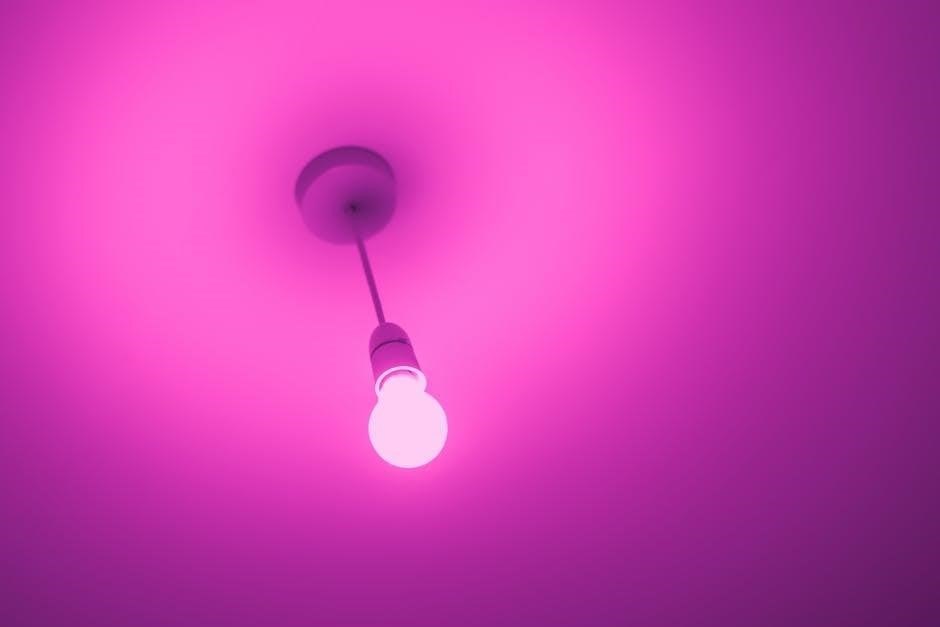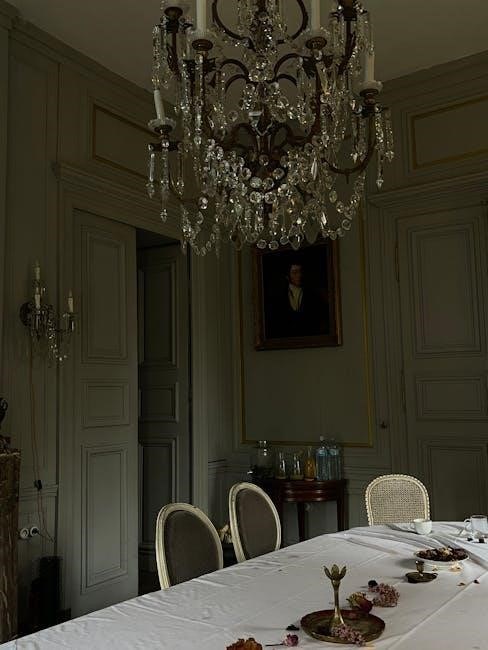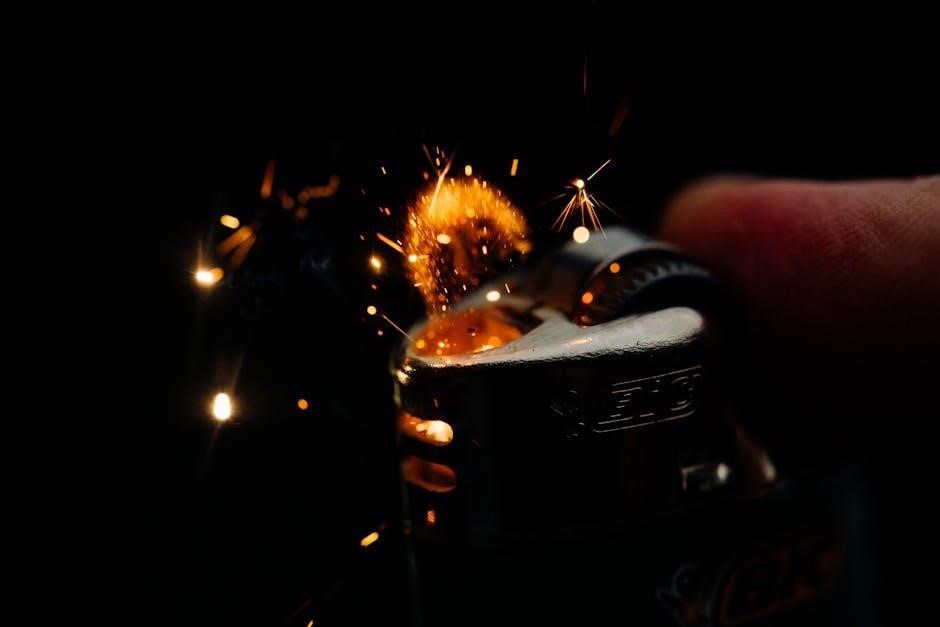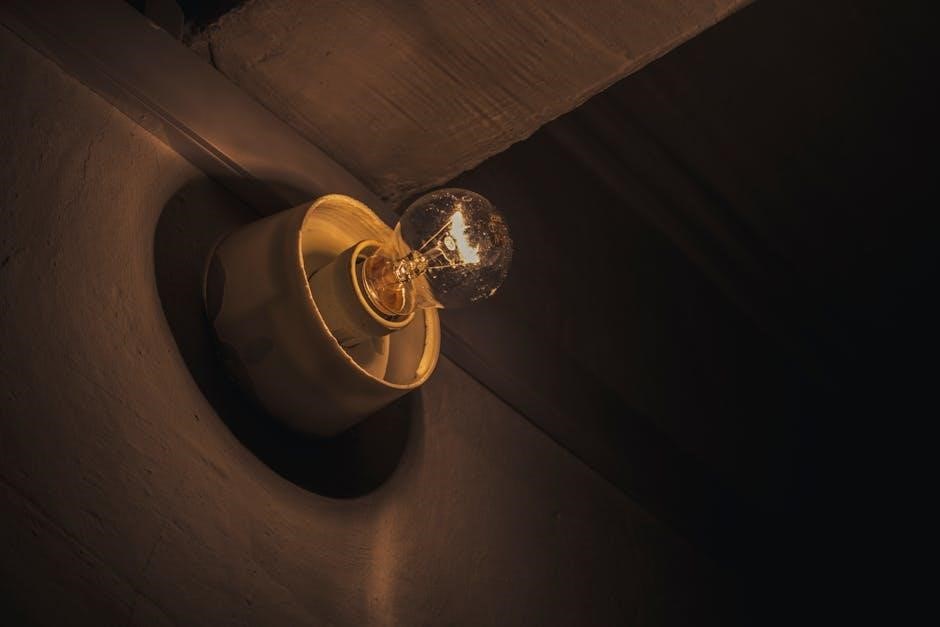Installing a light fixture requires careful planning and execution, start by reading the instructions manual and gathering necessary tools and materials, following safety guidelines is essential for a successful installation process always.
Importance of Following Instructions
Following the instructions manual is crucial when installing a light fixture to ensure safety and a successful installation. The manual provides a step-by-step guide on how to install the fixture, including wiring tips and troubleshooting advice. It is essential to read and understand the instructions before starting the installation process. The manual also includes important safety information, such as turning off the power at the breaker and using a voltage tester to double-check. By following the instructions, you can avoid common mistakes and ensure that the fixture is installed correctly. This will also help to prevent accidents and injuries. Additionally, following the instructions will help to ensure that the fixture is installed in compliance with the National Electrical Code (NEC) and other relevant regulations. Overall, following the instructions manual is critical to a safe and successful light fixture installation. Proper installation is key to a safe and functional lighting system.
Overview of the Installation Process
The installation process of a light fixture involves several key steps, including preparation, mounting, and testing. The process begins with preparing the work area and unpacking the fixture, and then proceeds to mounting the fixture onto the ceiling or wall. The installation process requires attention to detail and adherence to safety protocols to ensure a successful outcome. A typical installation process may take several hours to complete, depending on the complexity of the fixture and the individual’s level of experience. The installation process is critical to ensuring the safe and proper functioning of the light fixture. By understanding the overall installation process, individuals can better prepare themselves for the task and ensure a successful outcome. The process is designed to be straightforward and easy to follow, with clear instructions and guidelines provided in the instructions manual. Proper planning and execution are essential to a successful installation.

Preparing the Fixture and Work Area
Clear the area and gather necessary tools and materials, ensuring a safe workspace always.
Unpacking and Checking the Fixture
To begin the installation process, carefully unpack the light fixture from its box, taking note of all the included parts and hardware, such as screws and light bulbs. It is essential to check the fixture for any damage or defects, ensuring that all necessary components are present. The instruction manual provided with the fixture should be consulted to verify the completeness of the package. A thorough inspection of the fixture and its parts will help prevent any issues or delays during the installation process. By taking the time to carefully unpack and check the fixture, you can ensure a smooth and successful installation. The unpacking process is a critical step, and it is crucial to be meticulous and thorough in this initial phase. This attention to detail will pay off in the long run, as it will help prevent any potential problems or complications.
Mounting the New Light Fixture
Mounting the new light fixture involves screwing it onto the mounting bracket, following the manufacturer’s instructions. The instruction manual included in the light fixture kit provides detailed guidance on this step. Typically, the fixture is attached to the bracket using screws, and any exposed screws on the canopy are covered with screw caps. It is essential to refer to the manual to ensure that the fixture is properly secured to the bracket. The mounting process requires attention to detail to ensure a safe and successful installation. The manufacturer’s instructions should be followed carefully to avoid any mistakes or damage to the fixture or surrounding area. By mounting the fixture correctly, you can ensure that it functions properly and provides the desired lighting effect. The mounting bracket and screws provided with the fixture are designed to support its weight and provide a secure attachment.

Step-by-Step Installation Guide
Follow detailed instructions and safety guidelines for a successful installation process always using the manual provided with the light fixture kit for guidance and support.
Removing the Old Fixture and Safety Check
To remove the old fixture, first ensure the power is off at the breaker, then use a voltage tester to double-check for any remaining voltage. This is a crucial safety step to prevent electrical shock or injury.
The old fixture can then be safely removed, taking care not to damage any surrounding surfaces or wiring.
It is also important to take note of the wiring configuration of the old fixture, to ensure a smooth transition to the new one.
By following these steps, you can ensure a safe and successful removal of the old fixture, and be ready to install the new one.
Remember to always follow the manufacturer’s instructions and take necessary safety precautions when working with electrical systems.
The safety check is an essential part of the process, and should not be overlooked or rushed.
Proper removal and safety checks will help prevent accidents and ensure a successful installation.
Installing the Trim and Cover on the Light Fixture
Installing the trim and cover on the light fixture is a crucial step in the installation process.
The trim is typically attached using a screwdriver and screws, and it is important to ensure that it is securely fastened to the fixture.
The cover is then placed over the trim, and any necessary adjustments are made to ensure a proper fit.
For pendant lights, chandeliers, or hanging lights with chains, the length of the chain may need to be adjusted to achieve the desired hanging height.
It is also important to ensure that the trim and cover are properly aligned and seated to prevent any gaps or unevenness.
By following the manufacturer’s instructions and taking care to properly install the trim and cover, you can ensure a professional-looking finish and a safe and functional light fixture.
The trim and cover serve as the final touches to the installation, and their proper installation is essential to completing the job.

Securing the Fixture to the Pole Top
Tighten the three square head bolts in the fixture base to secure it to the pole top properly always.
Checking the Electrical Box for Capacity and Strength
To ensure a safe and successful installation, it is crucial to check the electrical box for capacity and strength. The National Electrical Code allows up to 50 lbs to be hung from any electrical box that is threaded to accept No. 8-32 machine screws for attaching the crossbar. If you have chosen a heavy light fixture, it is essential to verify that your electrical box can support the weight. You can do this by checking the weight limit specified by the manufacturer or by consulting with a licensed electrician. Additionally, you should also check the strength of the electrical box to ensure it can withstand the weight and any potential vibrations or movements. By taking these precautions, you can avoid any potential hazards or accidents during the installation process. Proper checking of the electrical box is necessary for a secure installation.
Final Adjustments and Testing
Once the light fixture is installed, it is time to make any final adjustments and test the fixture. This involves turning the power back on at the breaker and checking that the light is working properly. You should also check for any loose connections or screws and tighten them as needed. Additionally, you should test the light fixture’s various functions, such as dimming or color changing, to ensure they are working correctly. It is also a good idea to check the light fixture’s alignment and adjust it if necessary to ensure it is level and secure. By making these final adjustments and testing the light fixture, you can ensure that it is installed correctly and will provide reliable and safe operation. Proper testing is necessary to ensure the light fixture is functioning as intended and to identify any potential issues.

and Troubleshooting Tips
Installing a light fixture can be a straightforward process if you follow the instructions carefully. If you encounter any issues during installation, refer to the troubleshooting section of the manual. Common problems include loose connections, incorrect wiring, or faulty components. To resolve these issues, check the connections and wiring, and replace any faulty components. It is also a good idea to consult the manufacturer’s website or contact their customer support for additional guidance. By following the instructions and troubleshooting tips, you can ensure a successful installation and enjoy your new light fixture. Proper installation and maintenance can help extend the life of the fixture and prevent future problems. Always follow safety guidelines and best practices when working with electrical systems to avoid injury or damage.
